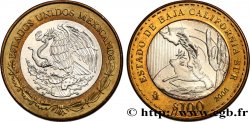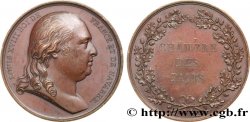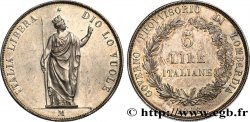fwo_870347 - MESSICO 20 Pesos “Pierre du Soleil” (calendrier aztèque) 1918 Mexico
non disponibile.
Articolo venduto sul nostro negozio (2023)
Prezzo : 1 450.00 €
Articolo venduto sul nostro negozio (2023)
Prezzo : 1 450.00 €
Tipo : 20 Pesos “Pierre du Soleil” (calendrier aztèque)
Data: 1918
Nome della officina / città: Mexico
Quantità coniata : 2831000
Metallo : oro
Titolo in millesimi : 900 ‰
Diametro : 27,2 mm
Asse di coniazione : 6 h.
Peso : 16,67 g.
Orlo : inscrite en creux
Grado di rarità : R1
Slab

NGC : AU58
Commenti sullo stato di conservazione:
Exemplaire sous coque NGC AU58
N° nelle opere di riferimento :
Diritto
Titolatura diritto : ESTADOS UNIDOS MEXICANOS / 1918.
Descrittivo diritto : Aigle debout à gauche sur un cactus, lui-même poussant sur une pierre, et terrassant un serpent au-dessus d’un lac bordé par deux branches composites ; dans le champ le millésime.
Traduzione diritto : (États-Unis du Mexique).
Rovescio
Titolatura rovescio : VEINTE PESOS/ *15 GR. ORO PURO*.
Descrittivo rovescio : Pierre du soleil ou “Calendrier aztèque”.
Traduzione rovescio : (Vingt pesos/ 15 grammes d'or pur).
Commento
Cet exemplaire est la frappe d’origine et est difficile à trouver. La “Pierre du Soleil” est un disque monolithique de 3,60 m de diamètre et 1,22 m d’épaisseur et pesant 24 tonnes. Découverte par hasard en 1790 à Mexico lors du pavage d’une place, cette pierre serait un autel sacrificiel sculpté sous le règne de l’empereur aztèque Axayácatl. Elle est conservée au Musée National d’anthropologie de Mexico.
This example is the original strike and is difficult to find. The “Sun Stone” is a monolithic disc 3.60 m in diameter and 1.22 m thick, weighing 24 tons. Discovered by chance in 1790 in Mexico City while paving a square, this stone is believed to have been a sacrificial altar carved during the reign of the Aztec emperor Axayácatl. It is housed in the National Museum of Anthropology in Mexico City.
This example is the original strike and is difficult to find. The “Sun Stone” is a monolithic disc 3.60 m in diameter and 1.22 m thick, weighing 24 tons. Discovered by chance in 1790 in Mexico City while paving a square, this stone is believed to have been a sacrificial altar carved during the reign of the Aztec emperor Axayácatl. It is housed in the National Museum of Anthropology in Mexico City.








 Segnalare un errore
Segnalare un errore Stampate la pagina
Stampate la pagina Condividi mia selezione
Condividi mia selezione Fai una domanda
Fai una domanda Consegnare / vendere
Consegnare / vendere
 Descrittivo
Descrittivo















